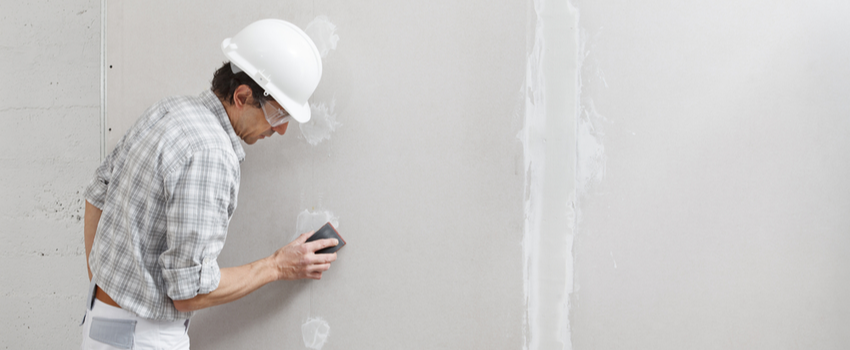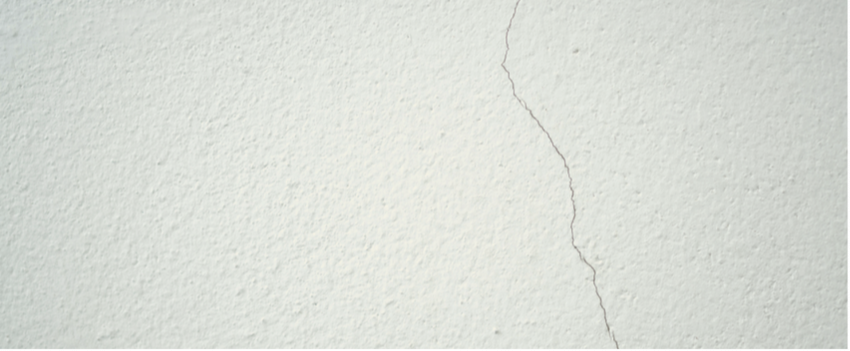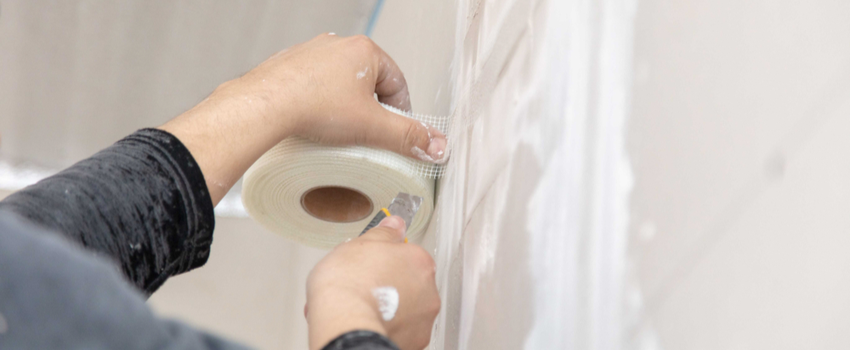Different elements of your home are connected and impact each other. The foundation and drywall are two examples of this. Let’s discuss how they’re connected and what to do if you see troubling signs in your drywall.
How the Foundation Impacts Drywall
First of all, let’s find out how foundation and drywall are related. The drywall sits fastened to wall framing, and as the foundation moves, so does the wall. This is why many structural issues present themselves in the form of drywall damage. However, sometimes a foundation settles but the wall stays in place—this is because the wall is better fastened to the ceiling joists.
Why does drywall crack?
Foundation settlement – Early signs of severe structural problems are often presented as cracks in walls and ceilings. The interior support piers, foundation walls, or slabs may be in the beginning stages of settling. Hairline cracks, like the one shown below, might be indicative of harmless foundation settlement. However, a larger crack can be a sign of concern.
Signs In Your Drywall of Foundation Issues
Excessive Nail Popping – One or two nail pops here or there is typically harmless, especially if your home is less than a year old. However, if your drywall is showing several nail pops, you may be in trouble. In addition, if the nail popping is accompanied by other types of wall cracks, it’s likely a sign of foundation issues.
Horizontal Drywall Cracks – Cracks that run horizontally across your drywall can signal severe movement to your home. If you discover this type of wall damage, it is vital that you have it evaluated as soon as possible. The longer you wait to fix it, the more damage is done. Find out what happens if you don’t fix foundation problems soon enough.
Diagonal Drywall Cracks – Diagonal cracks in your drywall can indicate structural movement. You may find them at window or door corners. They are often a sign of differential settlement, which can have detrimental effects on a home. The reason behind this is that different sections of a home settle at different rates, creating tension. This is a clear sign that the foundation is not stable.
Cracks Wider Than ¼ Inch – Hairline cracks in drywall are generally harmless and can be easily patched up. However, if a crack continues to grow over time, you may have a foundation problem on your hands. Your home may be experiencing serious settling if you notice gaping cracks around windows or doors. For reference, if the crack is larger than the thickness of a nickel, contact a trusted home foundation repair specialist right away.
Drywall Cracks: Foundation Repair or Wall Patch?
In general, it’s better to be on the safe side and call a professional any time you suspect foundational drywall damage. However, there are a couple of situations where you can patch up the crack and be good as new.
Hairline cracks in your drywall aren’t indicative of foundation problems. Anything less than ⅛ inch is usually nothing to worry about and can be re-taped and painted in little time. Check out our guide to learn how to identify structural vs. non-structural cracks in your foundation.
If you experience drywall cracks that keep coming back even after you’ve patched them, it’s time to call in a professional. A foundation repair expert will be able to assess the problem and provide a long-lasting solution. They will likely use professional foundation repair methods such as polyurethane foam jacking or pressed piling foundation repair.
Partnering with the Right Foundation Repair Company
If you’re concerned about the condition of your home’s drywall, our expert foundation repair company in Houston can help. At URETEK Gulf Coast, we’re dedicated to providing all of our customers with first-in-class foundation repair and maintenance services. We will diagnose your issue and provide a long-lasting solution, so you can stop worrying about your safety and investment.
Contact us today for a free estimate!



